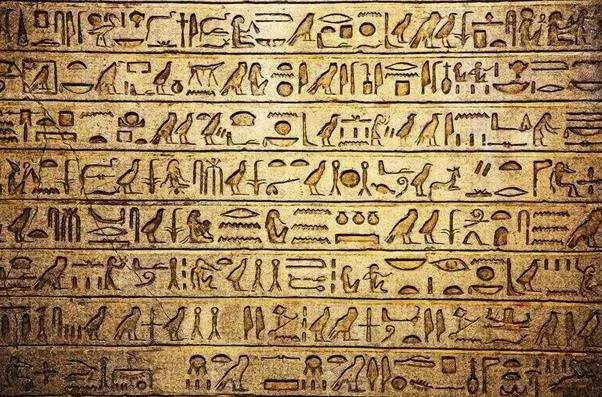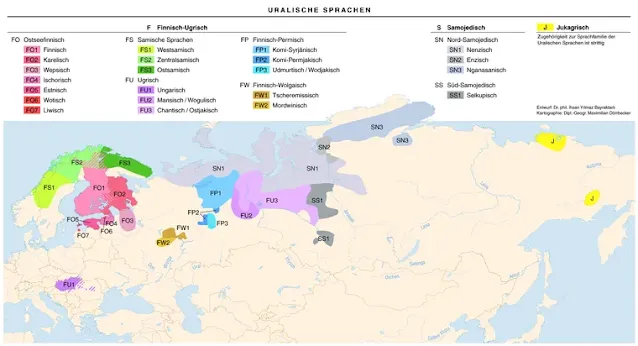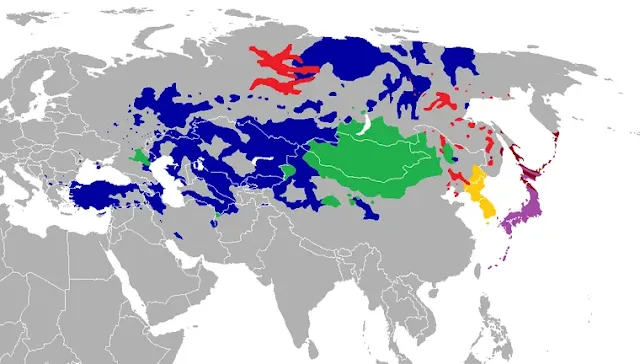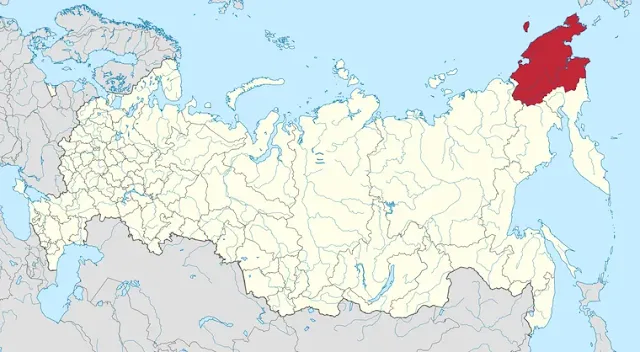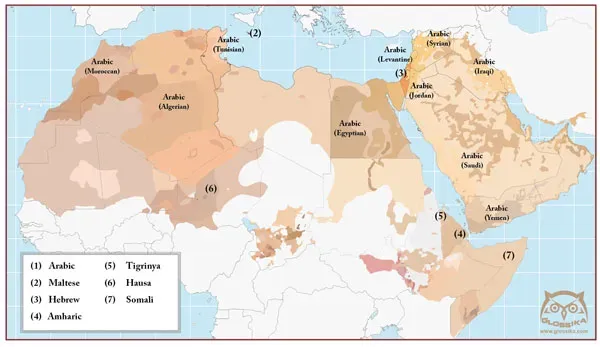With each other somehow, from bees and ants to whales and elephants, but only humans have developed an advanced language that involves more than just a pre-processed set of signs.
Our way of speaking is very different from the way animals communicate.
Even from a physical point of view, it comes from a special speech center in the brain that does not respond instinctively to its surroundings but rather organizes sound and meaning on a rational basis.
It is impossible to know how language evolved, but there is no doubt that it took a long time to develop.
Our ancestors have been speaking for millions of years but with less vocabulary and simpler and easier grammar than we know in today's languages.
What is the first language in the world?
Linguists disagree about the first language in the world, but they assert that the language has been with us since about 100 thousand years BC.
The Sumerian and ancient Egyptian languages (hieroglyphs) are among the oldest recorded written languages, dating back to around 3200 BC.
But the oldest language that still exists today is probably Chinese, which first appeared in 1500 BC.
As for the rest of the other ancient languages, they include:
- Tamil language: It is believed that it first appeared in 2500 BC.
- Sanskrit language: which dates back to around 2000 BC.
- Greek language: known as the language of the philosophers, as it dates back to 1500 BC.
- Hebrew language: which is believed to have been in use for more than five thousand years and the date of the appearance of the first written texts of it dates back to the year 1000 BC.
- Arabic language: It is also one of the ancient languages whose written texts date back to the year 512 AD.
These are simple examples of ancient languages, some of which are still used today.
But there are undoubtedly other languages that are less common and much older than these languages, which may have disappeared and vanished without our knowing anything about them.
Where did the world's languages come from?
The origins of human language may remain forever unknown, unlike the case with the different languages used in our world today.
The number of languages today is about 7000, but researchers often classify these languages into groups and families as few as twenty families.
Languages are related to each other through vocabulary, similar sounds, or similar grammatical forms.
The theory is that languages belonging to a particular group or family all descend from the same mother tongue.
The following is an explanation of a number of the most famous families of languages from which the various languages of the world descend.
1. Indo-European languages
It is probably the family of Indo-European languages to which English belongs the most common and studied, and from which many primitive Indo-European words have been reconstructed.
Research into this language family spanned nearly two centuries, making it possible to reconstruct the terminology and suggest the homeland in which it arose, the Russian steppes.
This language was often morphologically complex with a rather difficult grammar system as in Latin, Greek, and Sanskrit.
This complexity has even passed on to the modern languages of this family as well.
Languages belonging to this family extend over most of Europe, India, and parts of the Near East.
Branches of the Indo-European languages
The Indo-European languages have the following branches:
- The Germanic branch from which the English, German, Frisian, Dutch, Afrikaans, Swedish, Danish, and Norwegian languages descend. The extinct Germanic branch is represented by manuscripts written in Gothic script.
- Italic Romance is a branch of the Latin language from which Italian, Spanish, Portuguese, French, Romanian, Catalan, and a number of other European languages are descended.
- The Celtic Branch, which was once distributed in a large part of Europe, is now concentrated in the British Isles and Ireland. Its descendants include Cornish, Minke, Breton, Irish, Irish Gaelic, Scottish Gaelic and Welsh.
- The Balto-Slavic branch is divided in turn into two branches: the Baltic languages, from which the extinct Old Latvian, Lithuanian, and Prussian are descended. The Slavic languages include Russian, Ukrainian, Bulgarian, Serbian, Croatian, Czech and Polish.
- The Greek branch from which the Greek language descends, noting that the modern Greek language differs greatly from the classical Greek that was used in the past.
- The Indo-Iranian branch from which the Iranian (Persian), Kurdish, and Pashto languages, as well as a number of other languages, are descended.
- The Anatolian branch of the ancient Hittites.
- The Kuchan branch which was in use during the first millennium AD by Chinese Turkestan today known as Xinjiang.
2. Uralic languages
It is a language family that spreads in particular in the northwest of the Eurasian continent and is divided into two main branches:
- Finno-Ugric is the descendant of the Finnish and Estonian languages spoken in northern Europe, as well as the Hungarian spoken in central Europe. This linguistic branch also includes the Semitic languages spoken in northern Eurasia.
- Samoyedic is a branch of the Samudian languages of Siberia and the Russian Arctic. This branch includes Nenets and Celco languages as well as other languages as well.
3. Caucasian languages
The Caucasian languages spread in the regions surrounding the Caucasus Mountains, where some of them belong to the Indo-European language family, but about 40 languages of them deviate from the norm, and take for themselves one of three main Caucasian families:
- South Caucasian (Kartvellian), from which the Georgian language descends.
- Northwest Caucasian and descended from several languages such as Abkhaz and Kabardin.
- Northeastern Caucasian, from which the Chechen language descends, in addition to a number of other languages.
4. Altaic languages
The Altaic language family is spread over a wide area in North and Central Asia and was named after the Altai Mountains in Central Asia.
The Altaic languages include the following branches:
- Turkic languages and descended from Turkish, Azerbaijani, Turkmen, Uzbek, Kazakh, and other languages common in Central Asia.
- Mongolian languages, including the Mongolian language, of course, and a number of other languages such as Buryat, Dagorian, and Dongxiang in China.
- The Tagus languages are descended from the Evenk, Nanai, and Manchu languages that are common in Siberia and northern China.
It is believed that the Japanese and Korean languages belong to the Altaic language family, but there is a different belief in it and there is no strong genetic relationship between these two languages and the rest of the languages descended from this family.
Therefore, some consider that they are two separate languages or related to each other in some way due to the similarity between them.
5. Paleosiberian languages
It is a term used for a group of languages that are geographically related (and not genetically related to each other).
These languages are spread in the northeastern parts of Siberia with low density. It includes four main branches:
- Luoravetlan, from which the Chukchi, Koryak, and Kirik languages descend.
- Yeniseian and descended from one language is the Ket.
- Yukaghir, from which one language also bears the same name.
- Gillyak, a language of the same name, is also descended from it.
6. Dravidian languages
The Dravidian language family is particularly widespread in southern India, and many languages fall under it, the most common of which are: Tamil, Telugu, Kannada, and Malayalam.
7. Sino-Tibetan languages
This family includes two main branches:
- Chinese languages and all Chinese dialects and languages such as Mandarin and Cantonese descend from it.
- The Tibetan-Burmese languages are common in southern China and Southeast Asia. It is where the Tibetan and Burmese languages descend, as well as a number of other less common languages.
8. Tai languages
It is also known as Kadai, as it includes many languages spread in Southeast Asia, such as the Thai language and the local languages of Myanmar and Burma, as well as Laos, parts of Cambodia, Vietnam, and China.
9. Austro-Asiatic languages
These languages are also widespread in parts of South Asia, where they include the following branches:
- Mon Khimmer is descended from this Persian language, the Khmer language spoken in Cambodia, the Mon language in Myanmar/Burma and Thailand, in addition to Vietnamese.
- Munda includes languages spoken in parts of India and the Nicobar Islands.
10. Afro-Asiatic languages
They are the languages spoken in North Africa and the Middle East.
The Afro-Asiatic language family is one of the large language families with multiple branches, the most important of which are:
- Semitic languages, which include Hebrew, Arabic, and Amharic (Amharic) used in Ethiopia.
Many different and distinct dialects descend from the Arabic language, as some dialects formed independent branches, such as the Egyptian Coptic language, for example, but the latter is now extinct.
- Berber or Amazigh languages that are particularly prevalent in North Africa and include: Kabyle, and Tamasheq, in addition to many other Tuareg languages.
- The Cushitic languages are descended from the Somali, Dabarian, and Oromo languages.
- The Chadic languages are descended from the Khossa.
- The Omotic languages are descended from the Wala language, in addition to a number of other languages.
11. Niger-Congo languages
This family of languages is spread in West Africa and the Sahara and is one of the largest families of languages, under which thousands of other languages fall.
The Nigerian-Congolese languages have several branches, for example:
- Bantu languages include Kikongo, Khosa, Shona, Zulu, and Swahili.
- Cordovan languages
- Gore languages.
- Atlantean languages and descended under the Wolof.
- Koa languages.
- Mandi languages.
In addition to many other branches.
12. Nilo-Saharan languages
This family of languages is spread into two main groups: in the Nile Basin and in the Chari River Basin.
This family includes many exotic languages that you may not have heard of, such as: Maasai, Luo, Dinka, Nubian, Lendu, and others.
13. Khoisan languages
The Khoisan languages are one of the smallest of the language families, and they are widespread in southern Africa, in the Kalahari Desert in particular.
However, despite its small size, it is known for its famous crackling tongue.
An extremely rare feature in today's languages.
Examples of the Khoisan languages are languages such as Nama, Kang and Guljuansi.
14. Austronesian languages
The Austronesian languages are concentrated in the Pacific region, in Malaysia, Polynesia, Indonesia, and other islands scattered in the region, and about 1200 languages fall under this family.
One of the most famous and largest branches of this language family is the Malay-Polynesian branch, from which languages such as Javanese, Malay, and Tagalog descend.
15. Indo-Pacific languages
Although the Austronesian language family is common on the island of New Guinea, this part of the land is home to approximately 650 additional languages belonging to the Indo-Pacific or Papuan languages.
Because of the rugged nature of the island, the inhabitants remained isolated from each other despite their geographical proximity, which led to the difference in their languages and the emergence of more than one family in this small patch of land.
16. Australian Aboriginal Languages
The Australian languages form a special, independent family, although many of the languages descended from them are not very common and some have already died out.
Examples of aboriginal Australian languages still in use today are Wallaby, Jingle, and Derbal.
17. Eskimo-Aleut languages
There is great disagreement about the classification and origins of languages in the Americas.
But there are some agreed language families. The Eskimo-Aleut language family spreads from Siberia to Greenland, while the Na-Dené language family spreads in the northwest of Canada and the south of the United States of America, and languages such as Navajo and Haida descend from this family.
18. Macro-Algonquian languages
It is a language family that includes a wide group of Native American languages that are widespread in central and eastern Canada and the United States of America.
This family includes languages such as Chai, Cree, Mohican, Ojibwa, and many others.
This was a list of the most famous language families scattered in the world, but it is not the only one, as there are many other less common language families, that fall under, for example, the Mayan languages used in Mexico and Guatemala, as well as various languages spread in South America, such as the Caribbean languages, for example.
There are also some languages that do not belong to any of the language families and are called isolates in English.
Examples of these languages include the Basque language in northern Spain and southern France, the Ainu language in Japan, and the Gilak language in northeastern Russia.
Thus, you will have taken an overview of the origin of languages in the world and how they are distributed.
You might think that this article is only a long lesson in the history of languages, but it is nonetheless of great importance, especially when it comes to learning a new language.
Now you can find out why English is different from French, for example, and why Asian languages like Chinese, for example, are difficult, complex, and completely different from our language.
In this way, for example, you can choose to learn languages that come from the same family or branch so that you can benefit from the similarities between them and facilitate the process of learning and mastering more than one language in a relatively short time.
Having learned the names of many languages in the world, is there a new language you would like to learn? Tell us about it through the comments.


